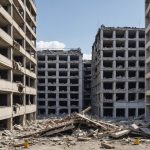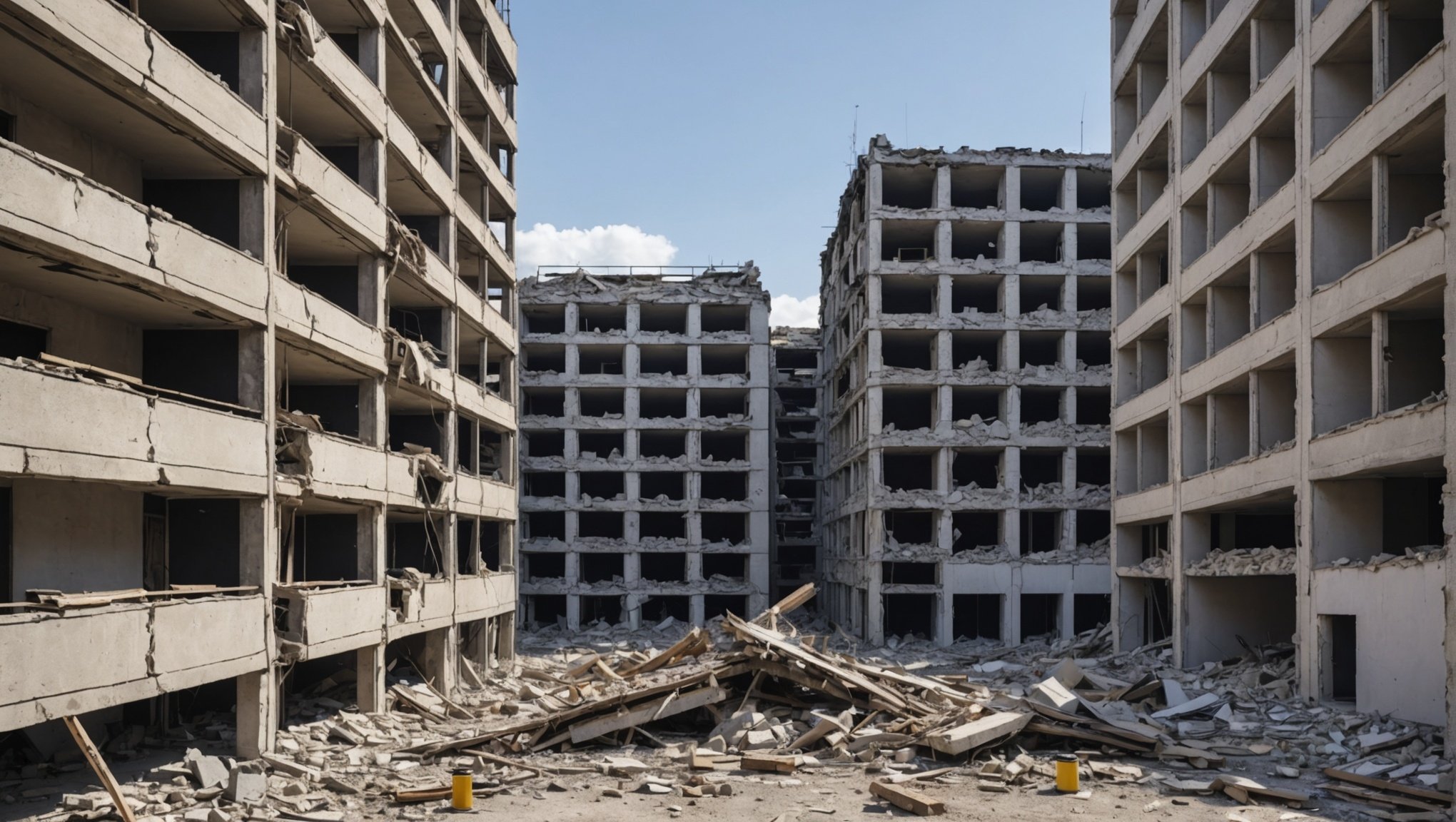Revolutionizing Disaster Response: How AI Enhances the Detection of Structural Damage in Buildings
In the face of natural disasters, the ability to quickly and accurately assess structural damage is crucial for effective disaster response and management. Artificial intelligence (AI) has emerged as a game-changer in this realm, leveraging advanced technologies such as machine learning, computer vision, and remote sensing to transform the way we respond to disasters.
The Role of AI in Disaster Response
AI is not just a tool; it’s a paradigm shift in how we approach disaster response. Here’s how AI is making a significant impact:
Also to read : Revolutionizing Crowd Control: The Role of Machine Learning in Optimizing Real-Time Management for Major Events
Real-Time Data Analysis
AI systems can process vast amounts of data in real-time, which is critical during disasters. For instance, AI-powered models can analyze satellite imagery, drone footage, and sensor data to identify areas of damage quickly. This rapid analysis enables emergency responders to prioritize their efforts and allocate resources more effectively[3].
Predictive Maintenance and Risk Assessment
Before a disaster strikes, AI can help in predictive maintenance and risk assessment. By analyzing historical data and real-time sensor inputs, AI can predict potential failures in building systems and infrastructure, allowing for proactive measures to mitigate risks. This proactive approach minimizes the risk of unexpected failures and ensures that buildings are more resilient to natural disasters[1].
Also read : Revolutionizing Pharmaceutical Manufacturing: How AI Can Enhance and Simplify Validation Processes
Advanced AI Models for Damage Assessment
Several advanced AI models have been developed to enhance damage assessment during disasters.
Open Buildings and SKAI Models
Google Research, in collaboration with the United Nations, has developed models like Open Buildings, SKAI Zero-Shot, and SKAI Fine-Tuned. These models use high-resolution satellite images to detect and segment building structures, identify damaged buildings, and classify the extent of damage. For example, the SKAI Fine-Tuned model can be trained with images from the specific disaster area, allowing it to provide highly accurate damage assessments[3].
Esri’s Pretrained GeoAI Models
Esri offers a range of pretrained GeoAI models that can be used for various tasks, including damage assessment. Their models can analyze drone and aerial imagery to identify damaged infrastructure, roads, and hazards like floods or debris. The Prithvi model, developed by NASA and IBM, is particularly effective in detecting burn scars and flood-affected areas using multispectral satellite imagery[2].
How AI-Assisted Damage Assessment Works
The process of AI-assisted damage assessment is intricate but highly efficient.
Step-by-Step Process
- Data Collection: High-resolution pre- and post-disaster satellite images are obtained.
- Image Analysis: AI models like Open Buildings generate building footprint polygons and overlay them on the images.
- Initial Assessment: Models like SKAI Zero-Shot provide a preliminary indication of areas with the most damage.
- Fine-Tuning: Expert analysts label examples of damaged and undamaged buildings to fine-tune the model.
- Detailed Assessment: The fine-tuned model assesses the entire area, machine-classifying the damage levels of buildings.
- Review and Correction: Expert analysts review and correct the model outputs before distributing the final damage assessment[3].
Key Benefits of AI in Disaster Response
The integration of AI in disaster response offers several key benefits:
Speed and Efficiency
AI significantly reduces the time required for damage assessment. For example, Google Research’s solution allowed teams to expand the area of analysis by a factor of 7 while reducing the time to produce directional findings by a factor of 6, bringing it down to under a day[3].
Accuracy and Reliability
AI models can achieve high accuracy in damage assessment. The SKAI Fine-Tuned model, for instance, can achieve an accuracy of 0.75 and above when provided with a sufficiently large and balanced sample of damaged and undamaged buildings[3].
Resource Allocation
AI helps in better resource allocation by identifying the most critical areas of damage. This ensures that emergency responders can focus their efforts where they are most needed, enhancing the overall effectiveness of the response efforts.
Practical Insights and Actionable Advice
Here are some practical insights and actionable advice for those looking to leverage AI in disaster response:
Invest in Data Infrastructure
- Ensure that you have a robust data infrastructure in place to collect and process large amounts of data quickly.
- Use sensors, drones, and satellite imagery to gather comprehensive data.
Train and Fine-Tune Models
- Use pre-trained models but fine-tune them with specific data from the disaster area for higher accuracy.
- Continuously update and refine your models based on new data and feedback.
Collaborate with Experts
- Work closely with expert analysts to review and correct AI outputs.
- Use a stratified sampling approach to select examples for expert labeling.
Leverage Advanced Technologies
- Utilize deep learning and machine learning algorithms for advanced data analysis.
- Integrate AI with other technologies like remote sensing and computer vision for comprehensive assessments.
Real-World Examples and Success Stories
Several real-world examples highlight the effectiveness of AI in disaster response.
Post-Earthquake Assessments
After an earthquake, AI can quickly assess the structural integrity of buildings. For instance, a study using recurrent neural networks showed high accuracy in predicting the displacement response of high-rise structures under various load conditions, making it a valuable tool for structural health monitoring[4].
Wildfire and Flood Response
AI models like the Prithvi model have been used to detect burn scars and flood-affected areas. These models help emergency responders assess damage and plan recovery efforts more efficiently, ensuring that resources are allocated effectively[2].
Future Directions and Potential Collaborations
As AI continues to evolve, there are several future directions and potential collaborations that could further enhance disaster response.
Integration with Social Media
- AI can be integrated with social media to gather real-time data from affected areas, providing valuable insights for emergency responders.
- Social media analytics can help in identifying areas of need and tracking the spread of information during disasters.
Climate Change Mitigation
- AI can help in predicting and mitigating the impacts of climate change by analyzing historical climate data and real-time environmental conditions.
- Early warning systems powered by AI can alert communities to potential natural disasters, allowing for timely evacuations and preparations.
International Collaborations
- Collaborations between organizations like Google Research, the United Nations, and other global entities can lead to the development of more robust and accurate AI models.
- Sharing best practices and technologies can enhance global disaster response efforts.
AI is revolutionizing the way we respond to disasters by providing real-time data analysis, predictive maintenance, and accurate damage assessments. As we move forward, it is crucial to continue investing in AI technologies, collaborating with experts, and integrating AI with other advanced technologies. By doing so, we can create more resilient communities and save lives in the face of natural disasters.
Table: Comparison of AI Models for Damage Assessment
| Model | Developer | Key Features | Data Sources | Accuracy |
|---|---|---|---|---|
| SKAI Fine-Tuned | Google Research & UN | Classifies building damage, fine-tuned with specific disaster data | Satellite imagery | 0.75 and above |
| Prithvi | NASA & IBM | Detects burn scars and flood-affected areas | Multispectral satellite imagery | High accuracy |
| Open Buildings | Google Research | Detects and segments building structures | High-resolution satellite images | High accuracy |
| Esri’s GeoAI Models | Esri | Analyzes drone and aerial imagery for damage assessment | Drone and aerial imagery | High accuracy |
Detailed Bullet Point List: Benefits of AI in Disaster Response
-
Speed and Efficiency:
-
Reduces the time required for damage assessment.
-
Allows for real-time monitoring and analysis.
-
Enhances the speed of delivering directional assessments.
-
Accuracy and Reliability:
-
Achieves high accuracy in damage assessment.
-
Uses machine learning algorithms to analyze patterns and anomalies.
-
Provides comprehensive and data-driven compliance reports.
-
Resource Allocation:
-
Helps in identifying the most critical areas of damage.
-
Ensures that emergency responders can focus their efforts where they are most needed.
-
Optimizes resource allocation based on real-time data analysis.
-
Predictive Maintenance:
-
Anticipates equipment failures and detects early signs of wear and tear.
-
Extends the lifespan of buildings and systems.
-
Minimizes costly repairs and prevents unexpected downtime.
-
Risk Assessment and Mitigation:
-
Analyzes project data, historical records, and environmental factors to identify potential risks.
-
Develops comprehensive risk management strategies.
-
Recommends targeted training or adjustments to mitigate risks.
-
Compliance Monitoring and Enforcement:
-
Automates site inspections using AI-powered drones.
-
Detects defects, deviations from plans, and safety hazards.
-
Ensures compliance with regulatory requirements through real-time monitoring.
By leveraging these benefits, AI is not only enhancing disaster response but also saving lives and reducing the economic impact of natural disasters.











